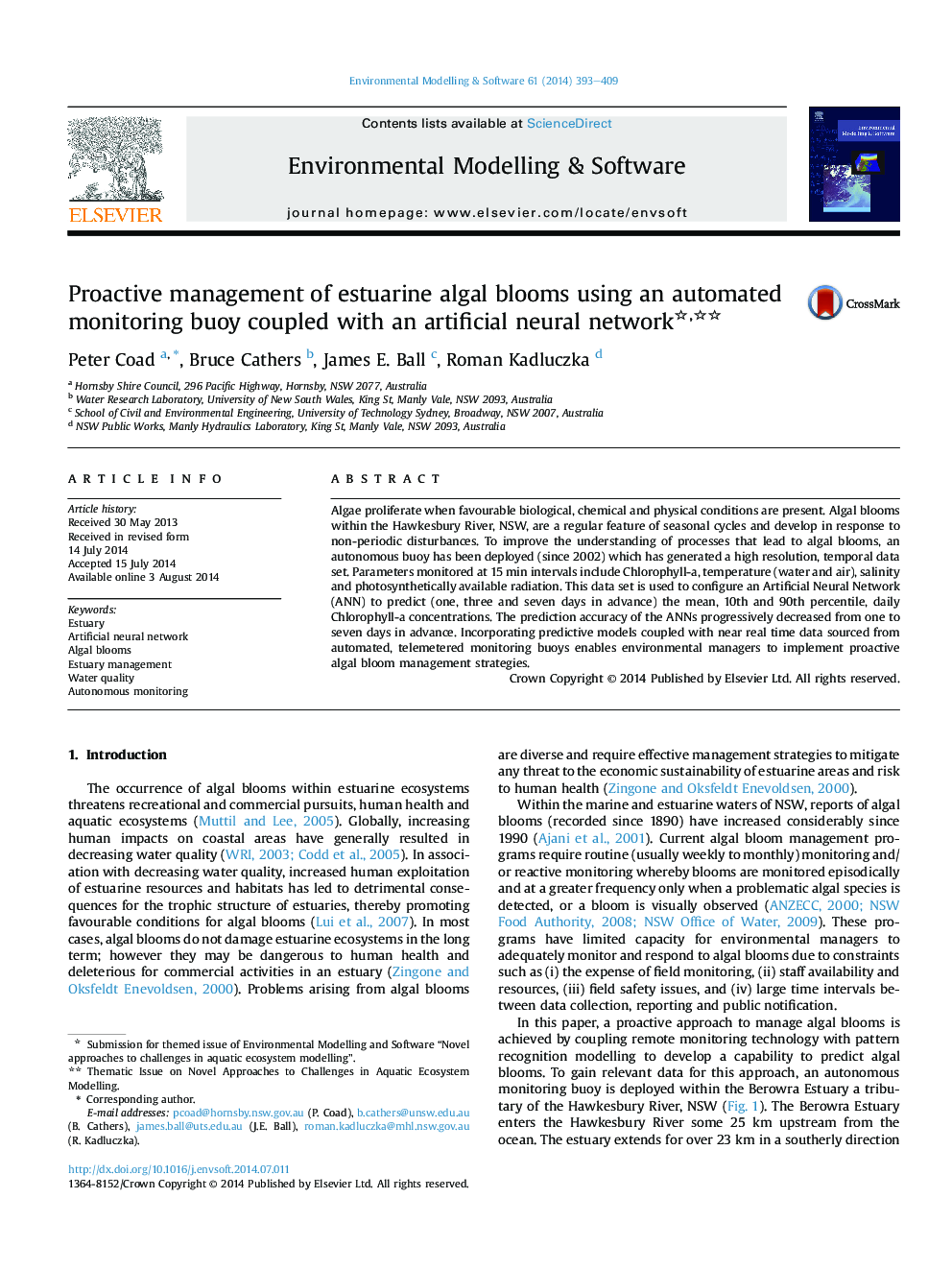| Article ID | Journal | Published Year | Pages | File Type |
|---|---|---|---|---|
| 6963603 | Environmental Modelling & Software | 2014 | 17 Pages |
Abstract
Algae proliferate when favourable biological, chemical and physical conditions are present. Algal blooms within the Hawkesbury River, NSW, are a regular feature of seasonal cycles and develop in response to non-periodic disturbances. To improve the understanding of processes that lead to algal blooms, an autonomous buoy has been deployed (since 2002) which has generated a high resolution, temporal data set. Parameters monitored at 15Â min intervals include Chlorophyll-a, temperature (water and air), salinity and photosynthetically available radiation. This data set is used to configure an Artificial Neural Network (ANN) to predict (one, three and seven days in advance) the mean, 10th and 90th percentile, daily Chlorophyll-a concentrations. The prediction accuracy of the ANNs progressively decreased from one to seven days in advance. Incorporating predictive models coupled with near real time data sourced from automated, telemetered monitoring buoys enables environmental managers to implement proactive algal bloom management strategies.
Keywords
Related Topics
Physical Sciences and Engineering
Computer Science
Software
Authors
Peter Coad, Bruce Cathers, James E. Ball, Roman Kadluczka,
